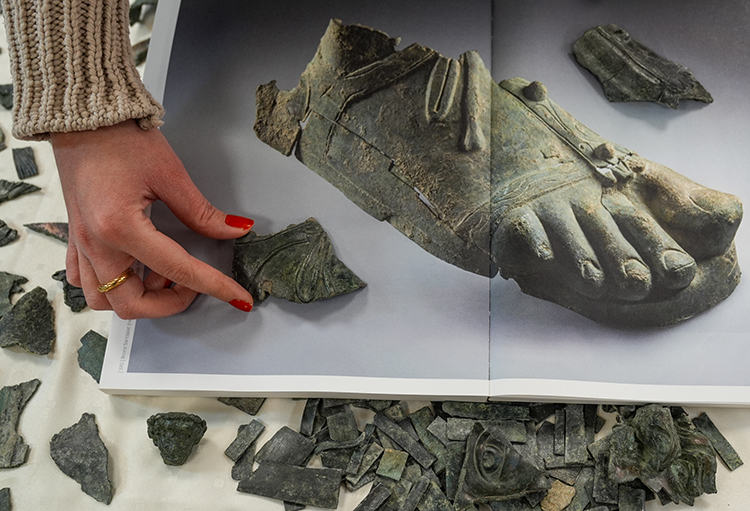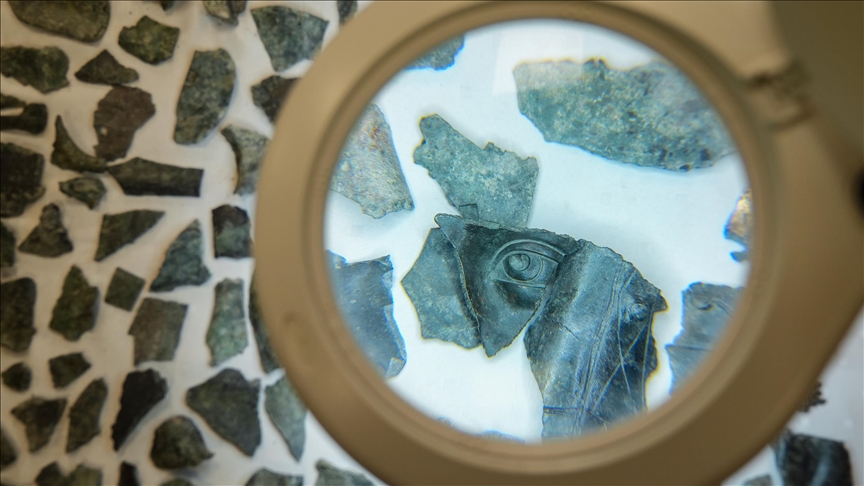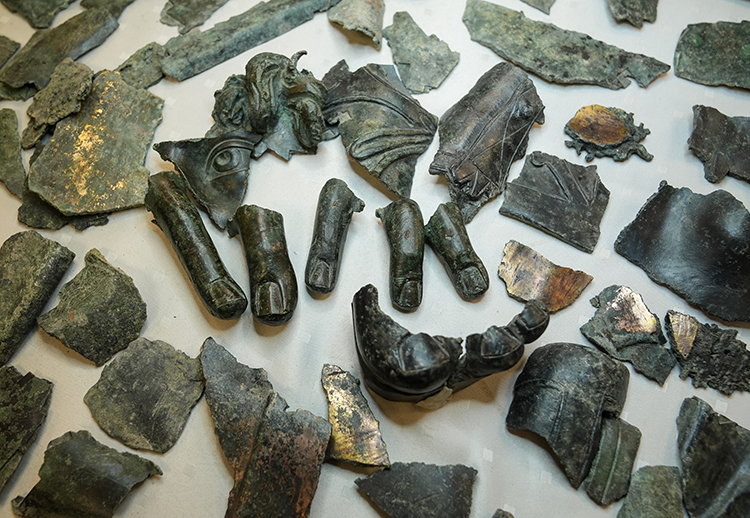
Archaeologists Discover Thousands of Bronze Statue Fragments in the Ancient City of Metropolis
Excavations at the Metropolis Ancient City in Torbalı, Izmir, have uncovered thousands of bronze sculpture fragments in what is believed to be an ancient “junkyard.” This striking discovery offers new insights into the artistic and cultural structure of the ancient world.
Conducted under the “Future Heritage Project” of the Ministry of Culture and Tourism, the excavations led by Prof. Dr. Serdar Aybek from the Department of Archaeology at Dokuz Eylul University have revealed countless bronze sculpture fragments that were collected for melting in antiquity. Among these fragments are pieces representing human figures from the Hellenistic and Roman periods, including heads, eyes, fingers, and sandals, as well as various animal and mythological figures.

Prof. Dr. Aybek noted that the finds were discovered in an area defined as an ancient junkyard, stating, “This is an exceptionally unusual find even for our profession. We have discovered approximately 2000 bronze sculpture fragments.” He emphasized the significance of the sculptures being broken apart, explaining, “We observe that bronze sculptures from the mythological period were dismantled due to the transition from polytheistic beliefs to monotheistic religions and the rise of Christianity during the Late Antiquity.”

The square and rectangular bronze plates found at the site indicate the presence of an active sculpture workshop in Metropolis. These plates are considered to be mold pieces used in the sculpture production process. The square voids in the sculpture bodies suggest that these plates were used to cover sections where iron rods, which formed the support structure of the sculptures, were placed inside the molds.
This discovery provides important information about how art, religion, and society were intertwined in the ancient world. It also serves as concrete evidence that recycling practices existed in antiquity. With this finding, the Metropolis Ancient City once again allows us to turn the pages of history.
You may also like
Calendar
| M | T | W | T | F | S | S |
|---|---|---|---|---|---|---|
| 1 | 2 | 3 | 4 | 5 | 6 | |
| 7 | 8 | 9 | 10 | 11 | 12 | 13 |
| 14 | 15 | 16 | 17 | 18 | 19 | 20 |
| 21 | 22 | 23 | 24 | 25 | 26 | 27 |
| 28 | 29 | 30 | ||||
Leave a Reply